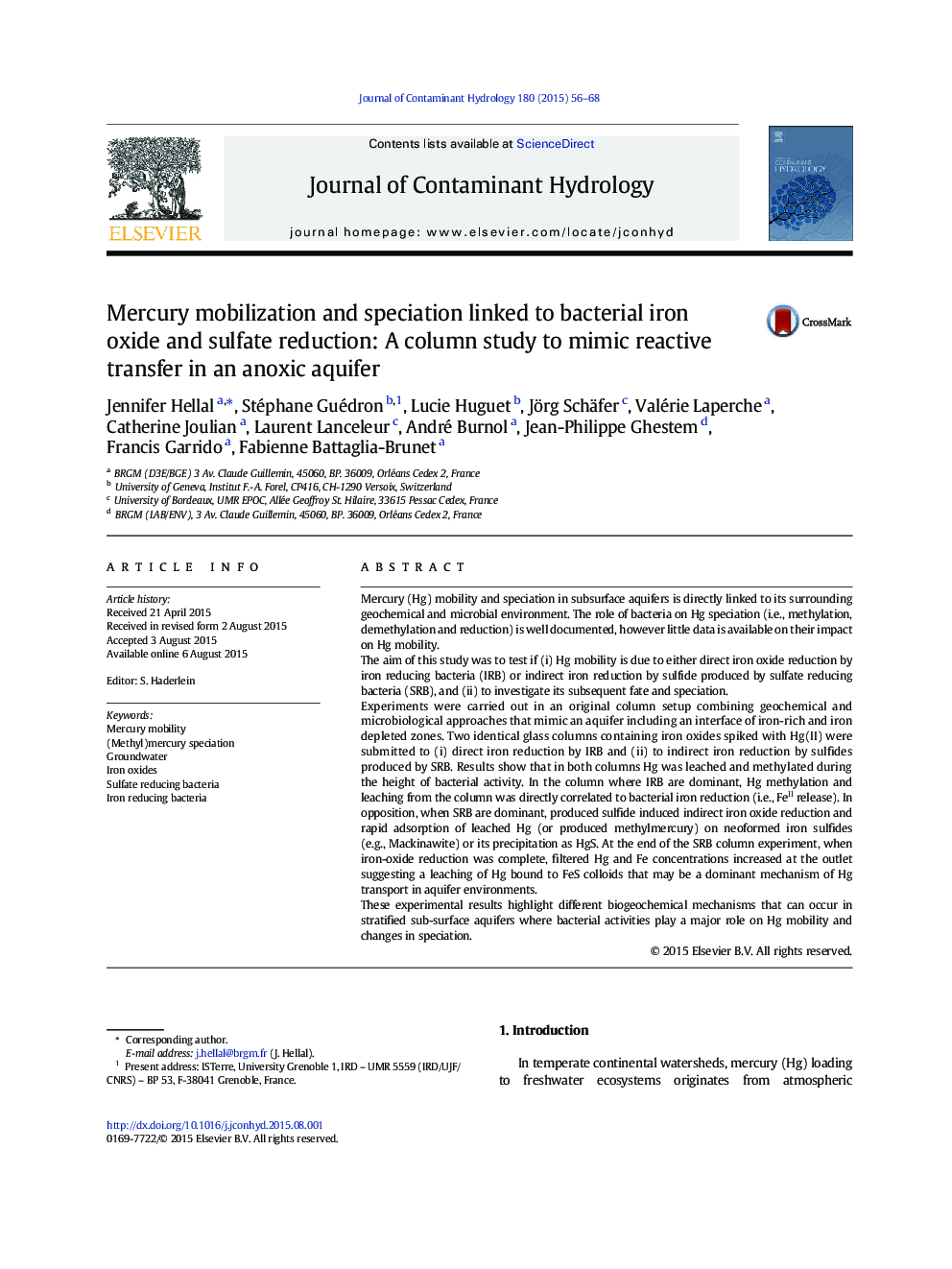| کد مقاله | کد نشریه | سال انتشار | مقاله انگلیسی | نسخه تمام متن |
|---|---|---|---|---|
| 4546426 | 1627030 | 2015 | 13 صفحه PDF | دانلود رایگان |
• Column setup spiked with mercury favoring bacterial iron and/or sulfate reduction.
• Mercury (Hg) was methylated and leached during the height of bacterial activity.
• Bacterial iron reduction (IR) favored Hg methylation and leaching.
• Bacterial sulfate reduction (SR) reduced Hg mobility through sulfide precipitation.
• Hg colloidal transport is likely a major transfer pathway under SR conditions.
Mercury (Hg) mobility and speciation in subsurface aquifers is directly linked to its surrounding geochemical and microbial environment. The role of bacteria on Hg speciation (i.e., methylation, demethylation and reduction) is well documented, however little data is available on their impact on Hg mobility.The aim of this study was to test if (i) Hg mobility is due to either direct iron oxide reduction by iron reducing bacteria (IRB) or indirect iron reduction by sulfide produced by sulfate reducing bacteria (SRB), and (ii) to investigate its subsequent fate and speciation.Experiments were carried out in an original column setup combining geochemical and microbiological approaches that mimic an aquifer including an interface of iron-rich and iron depleted zones. Two identical glass columns containing iron oxides spiked with Hg(II) were submitted to (i) direct iron reduction by IRB and (ii) to indirect iron reduction by sulfides produced by SRB. Results show that in both columns Hg was leached and methylated during the height of bacterial activity. In the column where IRB are dominant, Hg methylation and leaching from the column was directly correlated to bacterial iron reduction (i.e., FeII release). In opposition, when SRB are dominant, produced sulfide induced indirect iron oxide reduction and rapid adsorption of leached Hg (or produced methylmercury) on neoformed iron sulfides (e.g., Mackinawite) or its precipitation as HgS. At the end of the SRB column experiment, when iron-oxide reduction was complete, filtered Hg and Fe concentrations increased at the outlet suggesting a leaching of Hg bound to FeS colloids that may be a dominant mechanism of Hg transport in aquifer environments.These experimental results highlight different biogeochemical mechanisms that can occur in stratified sub-surface aquifers where bacterial activities play a major role on Hg mobility and changes in speciation.
Figure optionsDownload as PowerPoint slide
Journal: Journal of Contaminant Hydrology - Volume 180, September 2015, Pages 56–68
